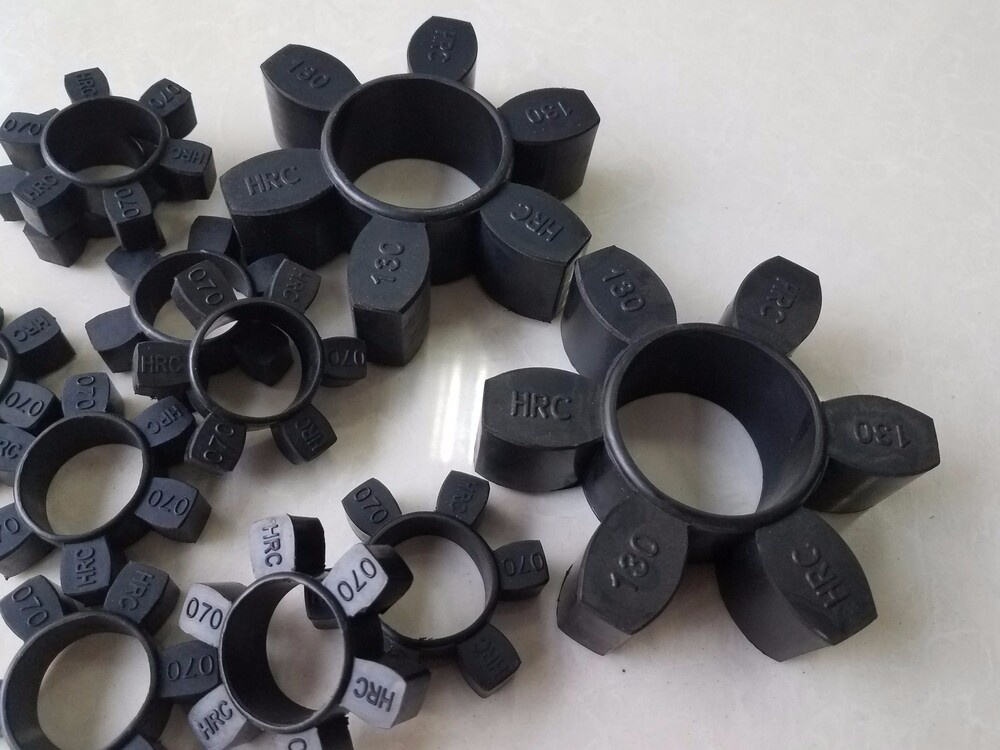In the world of machinery and engineering, rubber couplings play a crucial role in mitigating two common issues: vibration and noise. These flexible components are designed to connect rotating shafts, effectively transmitting torque while dampening vibrations and reducing noise levels. Let's delve into the significance of rubber couplings and how they contribute to a smoother, quieter operation in various applications.
Understanding Vibration and Noise
Before we explore the role of rubber couplings, it's essential to grasp the concepts of vibration and noise. Vibration refers to the oscillating movement of a machine or its components, often caused by unbalanced loads, misalignment, or rotating parts. Excessive vibration can lead to accelerated wear and tear, decreased performance, and even structural damage to equipment.
Noise, on the other hand, is unwanted sound generated during machine operation. It can result from mechanical vibrations transmitted through solid structures or components, as well as from the interaction of moving parts with air. Excessive noise not only poses a nuisance to operators but can also have adverse effects on their health and well-being.
The Role of Rubber Couplings
Rubber couplings serve as a vital link between rotating shafts, providing flexibility and damping characteristics that help mitigate vibration and noise. Unlike rigid couplings made of metal or other materials, rubber couplings absorb shocks and vibrations, thereby protecting sensitive equipment and enhancing overall performance.
Vibration Damping:
One of the primary functions of rubber couplings is vibration damping. The inherent elasticity of rubber allows it to deform under load, absorbing and dissipating vibrational energy. By installing rubber couplings between rotating shafts, engineers can effectively isolate vibrations, preventing them from propagating throughout the machinery.
Rubber couplings excel in applications where precision and stability are paramount, such as in precision machinery, printing presses, and automotive drivetrains. By reducing vibration levels, these couplings help extend the service life of components, improve accuracy, and enhance overall reliability.
Noise Reduction:
In addition to damping vibrations, rubber couplings also contribute to noise reduction in mechanical systems. By absorbing and dissipating vibrational energy, they minimize the transmission of noise through solid structures, thereby reducing overall noise levels.
This is particularly advantageous in environments where noise control is critical, such as in industrial facilities, commercial buildings, and residential areas. Rubber couplings help create a quieter working environment, enhancing comfort for operators and minimizing disturbances to nearby residents.
Types of Rubber Couplings:
Rubber couplings come in various designs and configurations to suit different applications and requirements. Some common types include:
- Flexible Couplings: These couplings feature a flexible rubber element sandwiched between two metal hubs. They provide a high degree of torsional flexibility while damping vibrations and reducing noise transmission.
- Jaw Couplings: Jaw couplings consist of two hubs with elastomeric inserts (often made of rubber) that dampen vibrations and compensate for misalignment. They are widely used in industrial machinery and power transmission systems.
- Gear Couplings: Gear couplings employ rubber or polyurethane elements to transmit torque while dampening vibrations and accommodating misalignment. They are commonly found in heavy-duty applications such as mining, steel mills, and marine propulsion systems.
Conclusion:
In conclusion, rubber couplings play a pivotal role in vibration damping and noise reduction in various mechanical systems. Their flexibility, elasticity, and damping properties make them indispensable components in industries ranging from manufacturing and construction to transportation and energy.
By effectively isolating vibrations and minimizing noise transmission, rubber couplings help improve equipment performance, reliability, and safety. As technology continues to advance, the demand for innovative solutions to vibration and noise control will only grow, further underscoring the importance of rubber couplings in modern engineering practices.


No comments yet